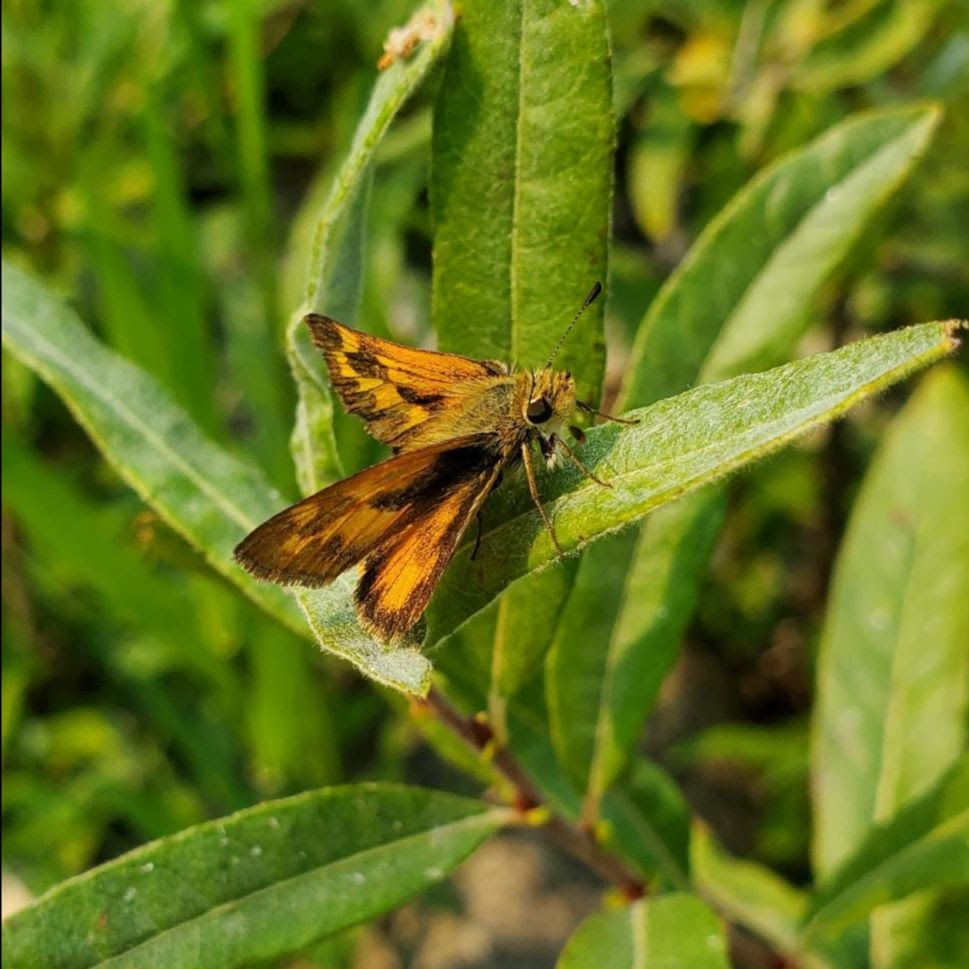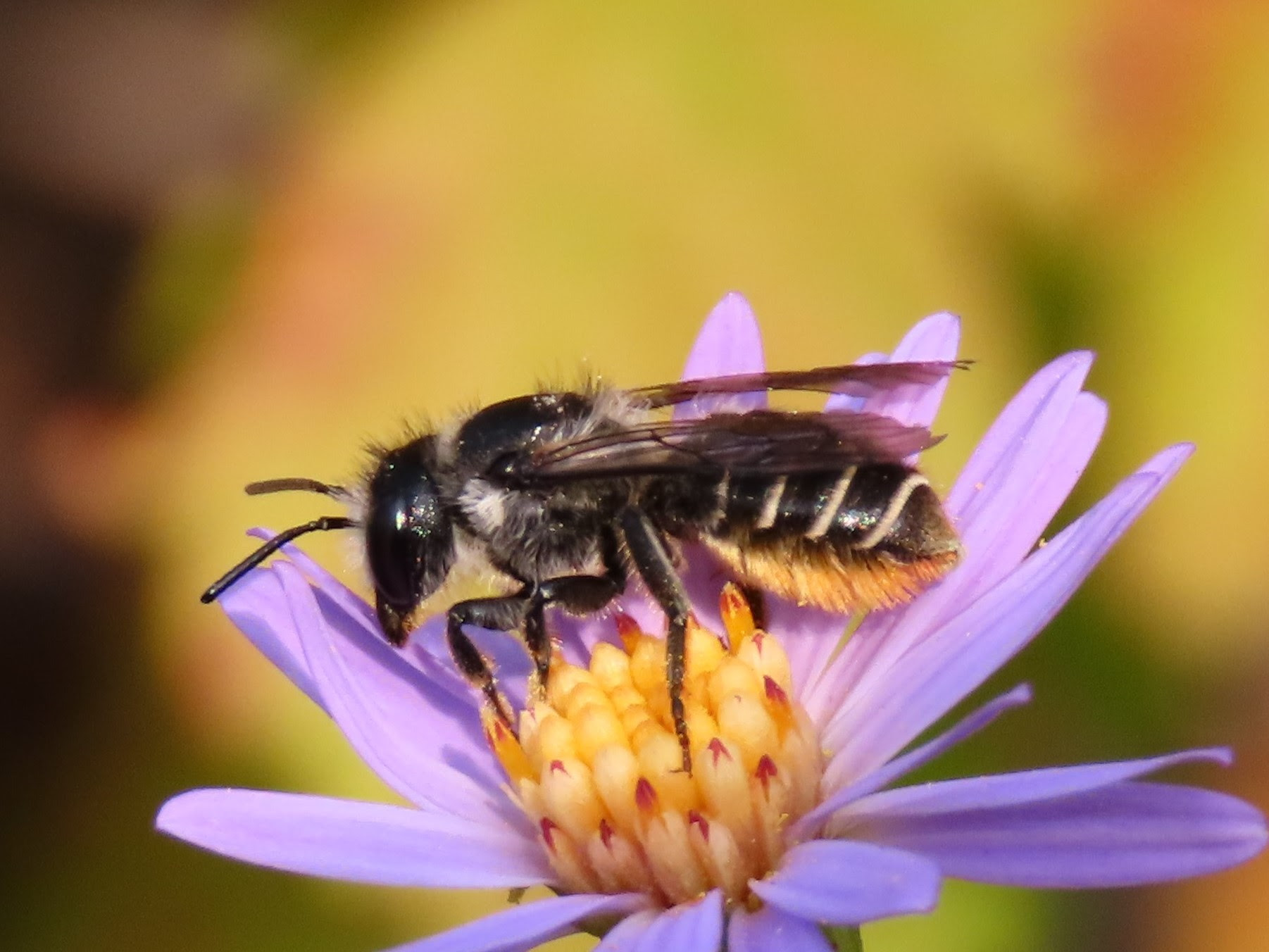This unique species of lady beetle has a descriptive, but gruesome, common name. Being all black in color, except for two red dots in the center of each wing cover […]
Read MoreArticles by: Morgan McNeill
Conchuela Bug (Chlorochroa ligata)
Our best guess for this immature bug (nymph) is a Conchuela Bug. These stink bugs come in a range of colors—olive-green, brown, gray, or black, with southern populations darker across their western North […]
Read MoreWoodland Skipper (Ochlodes sylvanoides)
These small, tawny orange butterflies start to emerge in mid to late summer and can be found in just about any habitat; including sagebrush, woodland clearings, gardens, and small streams. Caterpillars […]
Read MoreWestern Pond Fly (Sericomyia chalcopyga)
The Western Pond Fly is a type of flower fly (family Syrphidae) that does a pretty convincing job of mimicking a yellowjacket, down to the wings. Yellowjackets and their relatives (subfamily […]
Read MoreDrone Fly (Eristalis tenax)
The Drone Fly was introduced to North America from Eurasia prior to 1874 and is now found throughout most of the world. The adults are European Honey Bee (Apis mellifera) […]
Read MoreLeafcutter Bee (genus Megachile)
If you’ve ever noticed nearly perfect ovals, circles or semicircles cut out of leaves (and even flowers), you might have some leafcutter bees nearby. These small bees readily inhabit “bee […]
Read MorePaddle Caterpillar (Acronicta funeralis)
We were thrilled to see this caterpillar in our inbox, as this species is uncommon (BugGuide). Paddle Caterpillars are so-named for the pairs of long black hairs with flattened tips that resemble paddles. […]
Read MoreWestern Red-humped Caterpillar (Oedemasia salicis)
Cathy observed these caterpillars feeding on her Red Osier Dogwood (Cornus sericea), an attractive shrub with ruby-colored twigs. Western Red-humped Caterpillars are generalist hardwood feeders and choose from a wide […]
Read MoreCommon Tree Cricket (genus Oecanthus)
If you find a green tree cricket in North America, you can be certain it is in the genus Oecanthus. Most can be identified to species by examining the markings on the underside of […]
Read MoreThree-lined Shieldback (Steiroxys trilineatus), female
Shield-backed Katydids (subfamily Tettigoniinae) have a “shield” that extends back over their wings, which are usually short. They often sport brown or black coloration to blend in with their environment […]
Read More








